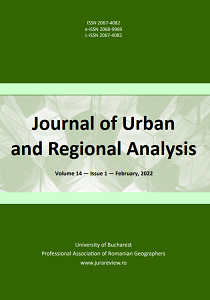INVERSE MODEL USING LAND AND PROPERTY SUB-SYSTEMS FOR PLANNING FUTURE CITIES: A GENERAL FRAMEWORK
INVERSE MODEL USING LAND AND PROPERTY SUB-SYSTEMS FOR PLANNING FUTURE CITIES: A GENERAL FRAMEWORK
Author(s): Ricardo F. Crespo, Abbas RajabifardSubject(s): Policy, planning, forecast and speculation, Rural and urban sociology
Published by: Editura Universitară
Keywords: inverse model; land and property system; urban complexity;
Summary/Abstract: This paper suggests, based on literature review, the use of the inverse model coupled with land and property systems to support urban decision-making. The inverse model is to be used for planning decisions today to achieve the desired tomorrow. This approach has been used previously in urban planning with a property system. The use of a property system alone is insufficient in dealing with the complexity of urban systems. Complex systems are made up of sub-systems that interact with each other; the integration of two sub-systems offers a first and simple alternative to address the complexity of urban systems. We suggest the use of two parametric approaches, logistic regression and house price, to model land and property sub-systems, respectively. Finally, we stress that further studies are needed to integrate the inverse model with other statistical techniques that also deal with complexity, such as cellular automata (CA) or agent-based models.
Journal: Journal of Urban and Regional Analysis
- Issue Year: 14/2022
- Issue No: 1
- Page Range: 5-22
- Page Count: 18
- Language: English

